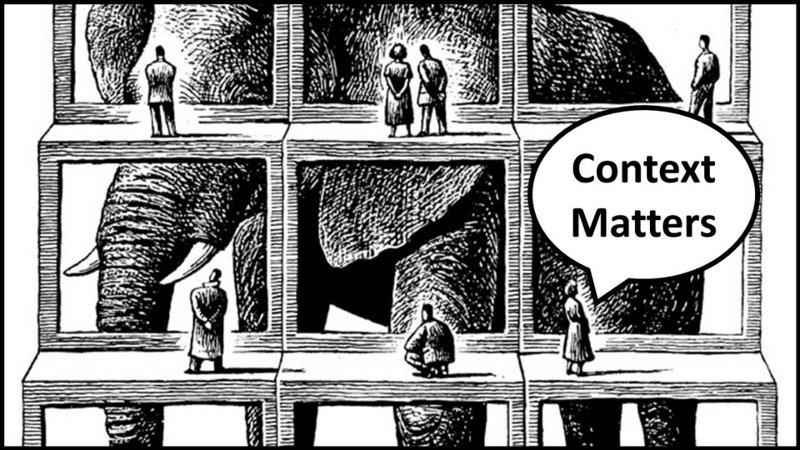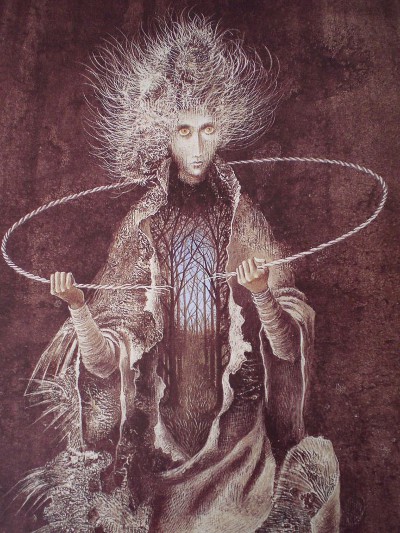
Students of my Advanced Dream Interpretation course at Dream School know what dreaming of driving out of control is likely to mean. Begin with the symbolism of driving and find out how it modifies the symbolism of the vehicle. The vehicle symbolizes something, and the action of driving adds to it. It tells the fuller story.
For example, if the vehicle represents your emotions and driving it represents control of them, a dream communicates the idea of losing control of emotions by showing you losing control of the vehicle.
Dreams are endlessly creative with stringing together ideas expressed as symbols. For this demo, #2 in RadOwl’s Crash Course in Dream Interpretation, let’s walk through how a dream can string together ideas and tell a deeply meaningful and personal story. We will use a dream that features driving and losing control, and while this demo is taken from a dream I helped to interpret, I ask you to pretend it’s your dream:
Title: Rescuing Mom
Begin with the scenario of dreaming about driving out of control. You are the passenger in the vehicle. Your mom is the driver, and the vehicle is her actual truck, the one she drives daily, not an imaginary truck. You know it means something symbolically — meaningful dreams have a reason for every detail.
A dream shared at Reddit Dreams
Dreams tend to bring in details from outer life when they speak to something related to it, so to interpret the above dream, the place to begin is by asking what’s going on with Mom.
The character that represents her in the dream is based on how she really is in waking life, in outer life, and that’s where we find the raw material the dream used to create the story, as you’ll see later.
Inner life is involved in all dreams, by nature — dream are created in your imagination, your inner world, after all — but it helps during the interpretation process — especially at the beginning — to know how much or to what degree the story is sourced internally and externally. What’s fictional and what’s based on reality. When dreams or scenes in them are heavily fictional, the more likely source is inner life, and when they replicate waking reality, the more likely source is outer life. This is a tendency, a place to begin.
Now we continue with the story the dream tells. Mixing reality with fiction, it puts Mom behind the wheel of her own truck when she loses control and it plunges off an icy road and into a frozen lake. You rescue her and swim to shore, and admonish her for her awful driving. Those details about Mom driving her own vehicle and losing control suggest the idea that SHE is out of control, not you, and outer life provides at least some of the raw material for this dream.
With these observations in mind, we’re ready to plunge into interpreting it.
What is the meaning of this dream

Now, as a dream interpreter I know where to begin asking questions. I want to see if the dream’s details constellate around the central idea that Mom is out of control.
You find the central idea in Step 3, but you’re keeping an eye out for it from the get-go. Simple facts #2 and #3 inform us that the dream is a story told using symbolism. In the D3 process, we interpret the symbolism and analyze the story in Step 2, so let’s work that step first.
Step 2, Interpret Symbolism: Use D3 to guide the questioning process, and the first place the spotlight shines is the action of rescuing Mom. You perform that action as an actor in the story following a script written subconsciously. Action is a narrative component of dream stories, something you note in Step 1 when you break down the dream into story elements and narrative components.
If you can interpret the symbolism of what it means to rescue her then admonish her driving, it may provide the info needed to understand what the dream means by showing her out of control while driving her truck.
Also, what do your reactions really say about the underlying meaning when you rescue her then criticize her driving? Simple fact #1 is you know subconsciously what the dream means, and either you react based on what you know subconsciously, with freedom to choose your own adventure. Or your reactions are scripted for the role you play in the story and you have no choice. Keep that in mind as we continue.
You could say that rescuing Mom is just something you’re supposed to do because she’s Mom and of course you’re going to rescue her, but dreams play by their own rules and don’t flinch from dramatically telling it like it is, especially when strong feelings are involved. Besides, I already know how this story ends, and the dream has good reason to depict her behavior the way it does. :)
Step 2, Story Analysis: In the story, Mom’s bad driving leads to you rescuing her, so we can surmise that her bad driving and the rescue interrelate. They are ideas expressed as symbolic actions and strung together to tell the story. By analyzing the story it becomes apparent that it’s set up to lead to the action of rescuing. This clue leads us to exploring whether the dream’s source can be found in how mom’s decisions impact you, and how you respond. Story analysis helps us to find the parallels between the dream and waking life.
The story is also set up to spark your reactions and feelings. Your feelings, which show in your reactions, are based on knowing subconsciously what it all means — simple fact #1.
And let’s say for example’s sake that rescuing Mom means bailing her out after she gets in another mess, after she makes one bad decision after another. “Rescue” takes on a new meaning, and the reaction of admonishing her driving can be understood as saying she’s a bad decision-maker and her life is a wreck. Rescuing her is a fact of life. It’s the personal context needed to understand the meaning behind what you act out in this scene. Context connects the dots.
Walk a mile in the dreamer’s shoes
Now, let’s switch perspective to the young man who had the dream, with a lesson learned that you picture a dream as your own while helping someone else interpret theirs.
As an exercise in story analysis, let’s say the young man decides to break the pattern of rescuing mom. That decision could show in the dream as the story playing out differently. The opening scene remains the same, but when the story reaches the point where he is supposed to rescue her, he could react instead by tossing her a life vest and telling her to rescue herself.
If he reacted that way, it’s like to show that he’s tired of rescuing her and doesn’t want to continue doing it. The symbolic action poignantly expresses his feelings. He breaks the pattern of coming to the rescue, and his decision is integrated deep into himself. It’s a natural part of the dreaming process to integrate our daily experiences of life and test ourselves in the dream’s virtual reality to find out what we really think and feel.
But in this case the dreamer is the dutiful son, and the personal context explains why he reacts the way he does — he’s acting out the story based on subconscious knowledge of what the dream means. He’s a character in the story and plays the role of rescuer. Because that’s what he does. He rescues his mom. Habitually.
This dream was shared at Reddit
To interpret dream symbolism, you think of it as a language, because that’s what it really is, and translate it. The words and sentences of dream language are embedded as information in the symbols, and the symbols string together to create symbolism. Threads of story and symbolism connect every dot (Step 3).
Now We Work Backward to Verify

We know what the dream means, but we want to make sure all the dream’s details fit together in a big picture (Step 3).
The icy road, for example, is a detail deliberately used by the dream to speak to something about the dreamer and his life. It’s a metaphor for the general circumstances of daily life with her, the “slippery road” they travel together. Hunting for metaphors in the dream story is part of Step 2, Story Analysis.
The dream makes him a passenger in her car because he’s along for the crazy ride of life with mom, the decision-maker. She’s behind the proverbial wheel. She has control.
But she doesn’t really have a control, and the dream expresses the idea through losing control of not just any car, it’s the one she drives in daily life.
The settings of the dream are the truck, the lake and the shoreline. The road is thought of as a metaphorical symbol for the road of life. The fact that it’s icey speaks to the conditions of their lives together. The resolution is TBD.
We’ll return to this subject in a moment.
Exploring other possibilities
With another tweak or two to the story, the dreaming mind can string together different ideas embedded in the dream symbols and communicate a different meaning. For example, if mom drives dad’s car off the road, in the right context it could communicate the idea that she’s being careless with their relationship or his feelings. The scene is sourced from the dreamer’s perceptions and is subjective.
Or it could say symbolically that a mom aspect inside the dreamer is interfering somehow with a dad aspect. We internalize the important people in our lives and they show up as dream characters. Mom driving out of control in the dream could just as well show what’s happening inside the dreamer, instead of outside in his life with his mom. Mom wrecking dad’s car could say symbolically that it’s a wrong move for the dreamer to use his mom’s example to try to act like a dad or a man.
If outer life isn’t the source, I’d explore roads into the inner life of the person who asked for help understanding this dream.
Instead, we find the source in his experience with his mom. Every detail constellates around the core idea that driving means control.
How do we know we’re right?
Next, let’s take it from the top and see what else we can learn.
Step 1: Story Elements and Narrative Components
- Settings: inside the truck together, the road, the lake, the shoreline.
- Characters: mom, son.
- Symbols: frozen road, the truck, being a passenger
- Actions: driving, rescuing
- Reactions: rescuing then admonishing mom
- Resolutions: TBD
Step 2: Interpret and Analyze
Simple facts: The dream is a story told with symbolism. In Step 2, you work through the details found in the Elements and Components. Interpret the symbolism. Analyze the story. It sets you up for Step 3 when you connect the details in context and reflect on your life.
Settings: We know what the truck, being in the same vehicle together and the icy road represent symbolically.
I think the lake is most important to the story for setting up the scene for the dreamer to rescue mom and himself and act out the symbolism. You could also say that his mom is on thin ice, and where else do you find thin ice than over a frozen lake?
The shoreline could be viewed as a set piece for the story, but if this was your dream, during the interpretation process you’d use dream interpretation tools such as associate and amplify to test if there’s deeper meaning to that imagery. The shoreline could be a way of saying the dreamer is on the other side of something, such as his feelings about the situation. It could be a way of saying a recent event where mom lost control is over and they “made it to shore.”
I think though that the dream isn’t about a specific memory but instead it encapsulates a situation which has developed over time. Rescuing mom and getting both of them to shore is a way to tell the story about how this dutiful son helps her.
Characters: mom and son. We know the mom in the story isn’t an image from the dreamer’s inner life, but she is still subjectively portrayed based on her son’s thoughts, feelings, and perceptions. He thinks she’s out of control, and he’s probably right.
Symbols: Mom’s truck is brought into the dream deliberately to mean the subject is about her and how she handles her daily life, with her son as a passenger along for the ride. The action of driving out of control adds on the idea of lack of control of her life. The ice conveys the idea of treacherous conditions on the road of life.
Actions: Yeah, that’s easy to interpret now that we know what driving and rescuing mean. Note, the action and how it translates into metaphorical symbolism is the primary route for interpreting the dream.
Reactions: The reason why he admonishes his mom is apparent. He knows subconsciously what’s really going on in the dream, simple fact #1. He’s really speaking to how she handles her life, not her driving (though maybe she’s a really bad driver, too).
Resolutions: Resolution is the trickiest part of a dream to interpret because sometimes it’s found in the dream content and other times through the implications of it. Sometimes the story is “to be continued,” and I think the son’s drama with his mom is ongoing. The dream provides him with the perfect metaphor for understanding the situation. What he does from there is up to him.
Step 3: Connect and Reflect
Now we have all the info we need to connect the dots (details of the dream that we identify as story elements and narrative components) and view them in context. In the above example we see how every detail connects symbolically or story-wise with the central idea of losing control. No loose ends. That’s how I know ultimately that the interpretation is as accurate as I can make it.
However, the ultimate proof comes from the dreamer himself. He knows subconsciously what the dream means, and my interpretation resonates strongly with him. You feel a ding of recognition when a dream is correctly understood. It’s like remembering a word that’s on the tip of your tongue.
Personal context is the lens through which you always view a dream. I can’t tell you how many times I’ve reminded people of this fact after they have a dream about a big disaster like an earthquake or a war — they tend to think the dream is going to come true on a collective level, and only in exceptionally rare instances have I found this to be true. Dreams almost always speak instead to what’s happening with you personally.

The story of the dream provides context too because it shows you how the symbols are defined. It works the same as understanding words in context of a sentence. If the word “spring” is used in a sentence, you know through context whether it means “to jump,” “to release from captivity,” the season of the year, or some other definition of it. If I say “spring,” how do you know what I really mean? That’s why context matters.
Almost done
Finally, the dreamer reflects on his life and because he’s worked through the Steps, he knows what the dream means. Now he knows why he gave himself the experience. The dream is set up to show him the problem with his mom, his reaction, and give him the information to find a solution or at least frame the question in his own mind. The image of rescuing his mom from her sinking truck captures the big picture painted by this dream. It summarizes the dynamics of the situation and how it personally affects him.
That’s a lot of information packed into a few symbols and symbolic actions, and that’s the nature of dream symbolism. Also, we’ve covered A LOT of ground with Demo #1 and #2 of RadOwl’s Crash Course on Dream Interpretation. I hope you’re catching on. Now we can run through more demos and really have some fun with this learning process.
You really can understand and interpret your dreams using the three-step D3 process. It’s exciting, eh. Keep going to Crash Course Demo 3 when you’re ready.





